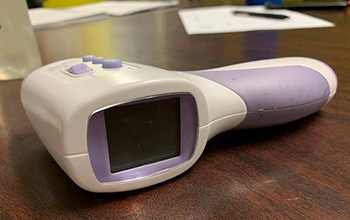Texas A&M University scientists have created a battery that uses thermal energy from the body heat to power a fever-detecting wearable device. As a result, the device can be used to detect fever in large groups of people, saving time and money. The research is funded by the National Science Foundation in the United States.
“The fever detector can be distributed to many unspecified people at public places at a low price, and this technique could be helpful in the early and fast detection of fever commonly observed in a viral infection such as COVID-19, SARS, MERS or swine flu,” said Choongho Yu.

“Thermal energy scavenging shows great potential since an output voltage can be obtained by a temperature difference supplied by the fever,” said Yufan Zhang. “To visualize the temperature changes, an electrochromic fever detector has been fabricated and connected to the thermal energy harvester.”
Furthermore, the team is also working to boost the technology’s power output for use in larger devices. The goal of the research is to use thermal energy produced by carbon steel electrode corrosion to power devices. According to the researchers, the corrosion could generate sufficient energy to power a device for more than ten years.

The ability to detect fever is critical for preventing viral spread. As per the researchers, this low-cost, self-sustaining technology can alleviate fever detection concerns in many individuals by identifying fevers quickly and precisely.

The findings were published in Nature Communications.
Source: NSF


